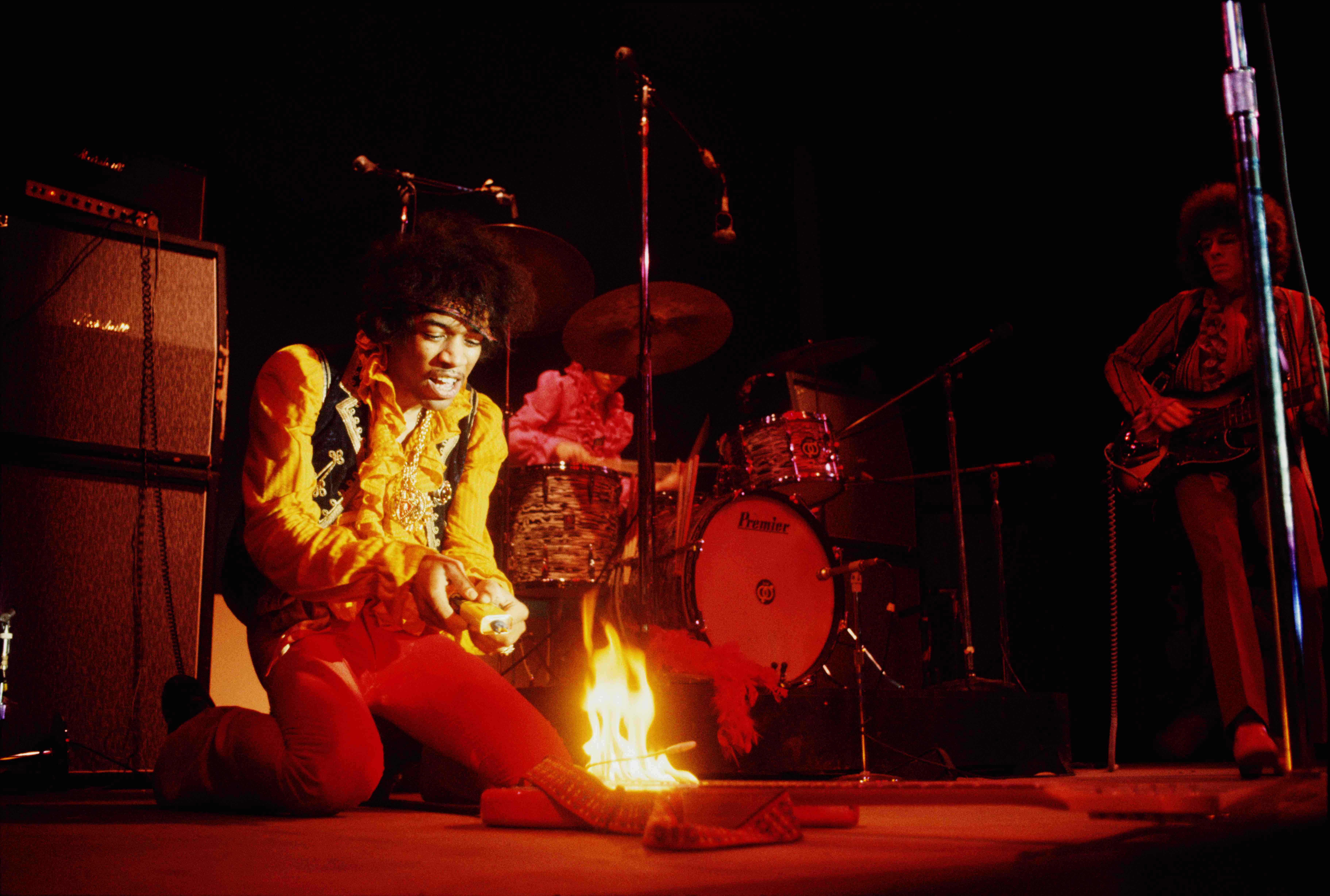The photographer who defined the look of rock and roll
- Text by Miss Rosen
- Photography by Jim Marshall

Throughout his illustrious career, American photographer Jim Marshall (1936-2010) defined the look of rock and roll. His images helped turned the genre into a revolutionary movement which went against the oppressive power structure of the status quo.
“Jim was a very complicated man and anybody who knew him either hated him or loved him,” says Amelia Davis, Marshall’s longtime assistant. She is also the editor of Jim Marshall: Show Me the Picture – Images and Stories from a Photography Legend (Chronicle Books), a masterful compendium of the photographer’s life designed to complement the documentary film, Show Me the Picture: The Story of Jim Marshall.
“He had a rough exterior,” she continues. “He was a drug-addicted, drinking, gun-toting guy. But when you look at these photographs you see humanity in Jim, because he wouldn’t be able to take those photos if he didn’t have that inside of him.”
Born in Chicago to immigrant parents who identified as Assyrian, Marshall’s family moved to San Francisco when he was a baby. Soon after, his father left and Marshall began to fend for himself. A self-taught photographer, Marshall bought his first Leica in 1959 and went into North Beach and the Filmore District to photograph the jazz scene.

The Charlatans playing at the Summer of Love concert in Golden Gate Park, San Francisco, 1967

The Who outside their hotel in the Tenderloin, San Francisco, 1967
“Jim developed his own style. He was able to learn his equipment and he knew it so well that it was an extension of himself,” Davis says. “He loved natural light. He hated artificial light. He liked to capture people in their environment with their guard down.”
When the Haight-Asbury counterculture scene took off in the mid-60s, Marshall was poised to document the era from the beginning to end. Whether travelling with Joan Baez while she joined in the trial runs for the March of Washington, or with the Rolling Stones on their notorious 1972 tour, Marshall had an innate sense that something was going to happen – and that he had to be there.
“He didn’t know what but he had his camera with him and he was able to document it all,” Davis says. “A writer has his notebook and his pen. A musician has their instrument and that’s how they communicate their voice. Jim communicated with his camera. That was his instrument and that’s the way he was able to communicate these feelings to the world.”
Whether accompanying Johnny Cash for his landmark performance at the San Quentin State Prison or hanging out with Janis Joplin and Jimi Hendrix, Marshall was an integral part of the scene. His photographs have become visual diary of the rebellious spirit of rock and roll at the height of the Civil Rights and Women’s Liberation Movements, fully embodying the ethos of free love.
“With Jim’s photos I don’t feel like a voyeur, I feel like a participant,” Davis says. “You feel like you can step into that frame and experience it with them at that moment. That’s what separates Jim from a lot of other photographers. You are a piece of that moment.”

John Coltrane at Ralph Gleason’s house in Berkeley, California, 1960

Janis Joplin “happy” backstage at Winterland, San Francisco, 1968

Jimi Hendrix lighting his guitar on fire, Monterey Pop Festival, Monterey, California, 1967

Keith Richards, Sunset Sound, Los Angeles, 1972

Jim Morrison at the Northern California Folk Rock Festival, Santa Clara, California, 1968

Jimi Hendrix filming Janis Joplin backstage at Winterland, San Francisco, 1968
Selections from Jim Marshall: Show Me the Picture – Images and Stories from a Photography Legend are currently on view in Woodstock at 50 at the Rock & Roll Hall of Fame in Cleveland, Ohio, through Fall 2019.
Follow Miss Rosen on Twitter.
Enjoyed this article? Like Huck on Facebook or follow us on Twitter.
You might like

Remembering New York’s ’90s gay scene via its vibrant nightclub flyers
Getting In — After coming out in his 20s, David Kennerley became a fixture on the city’s queer scene, while pocketing invites that he picked up along the way. His latest book dives into his rich archive.
Written by: Miss Rosen

Nina Utashiro builds disquieting, macabre sonic worlds
Huck x Eastern Margins — We caught up with the Japanese-German rap experimentalist ahead of her performance at Huck’s SXSW London joint event with Eastern Margins.
Written by: Isaac Muk

On Alexander Skarsgård’s trousers, The Rehearsal, and the importance of weirdos
Freaks and Finances — In the May edition of our monthly culture newsletter, columnist Emma Garland reflects on the Swedish actor’s Cannes look, Nathan Fielder’s wild ambition, and Jafaican.
Written by: Emma Garland

Huck teams up with Eastern Margins for a special SXSW London showcase
From Shibuya to Shoreditch — Taking place at Village Underground on Monday, performances will come from MONO, Nina Utashiro, Ena Mori, Jianbo, LVRA & Soda Plains.
Written by: Isaac Muk

Analogue Appreciation: Shura
I Got Too Sad For My Friends — In an ever more digital, online world, we ask our favourite artists about their most cherished pieces of physical culture. Today, it’s English singer-songwriter Shura.
Written by: Shura

We are all Mia Khalifa
How humour, therapy and community help Huck's latest cover star control her narrative.
Written by: Alya Mooro